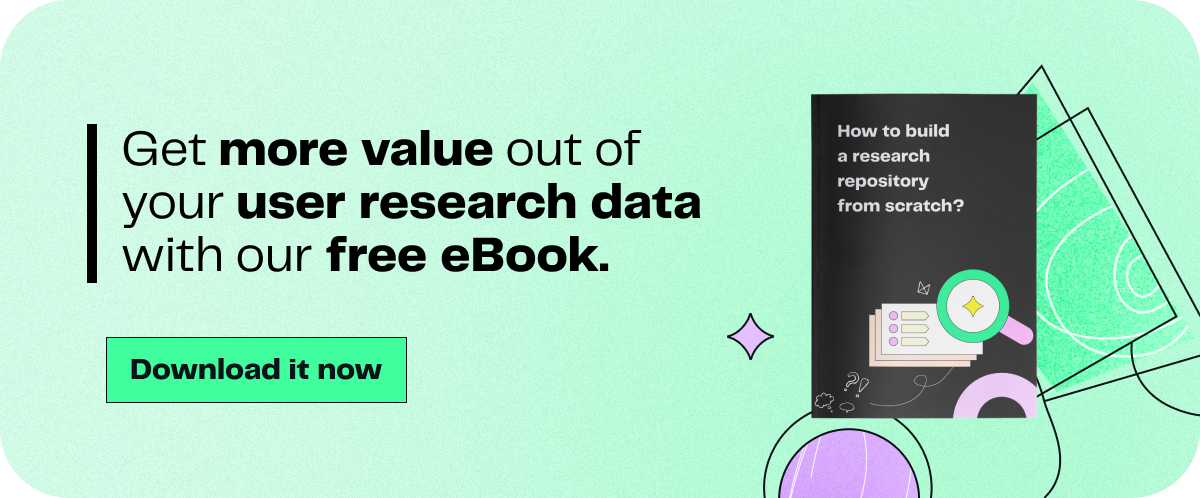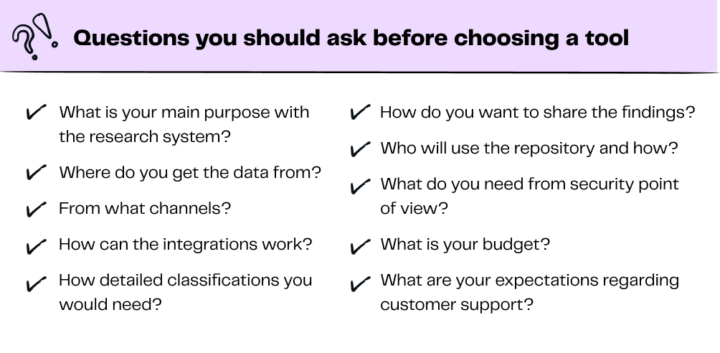A centralized system is required to develop a good understanding of your users across teams and across your firm. Here's when research repositories come in handy. They bring together various points of user input and feedback. So, whether you're a UX researcher, designer, or a product manager, this post is for you.
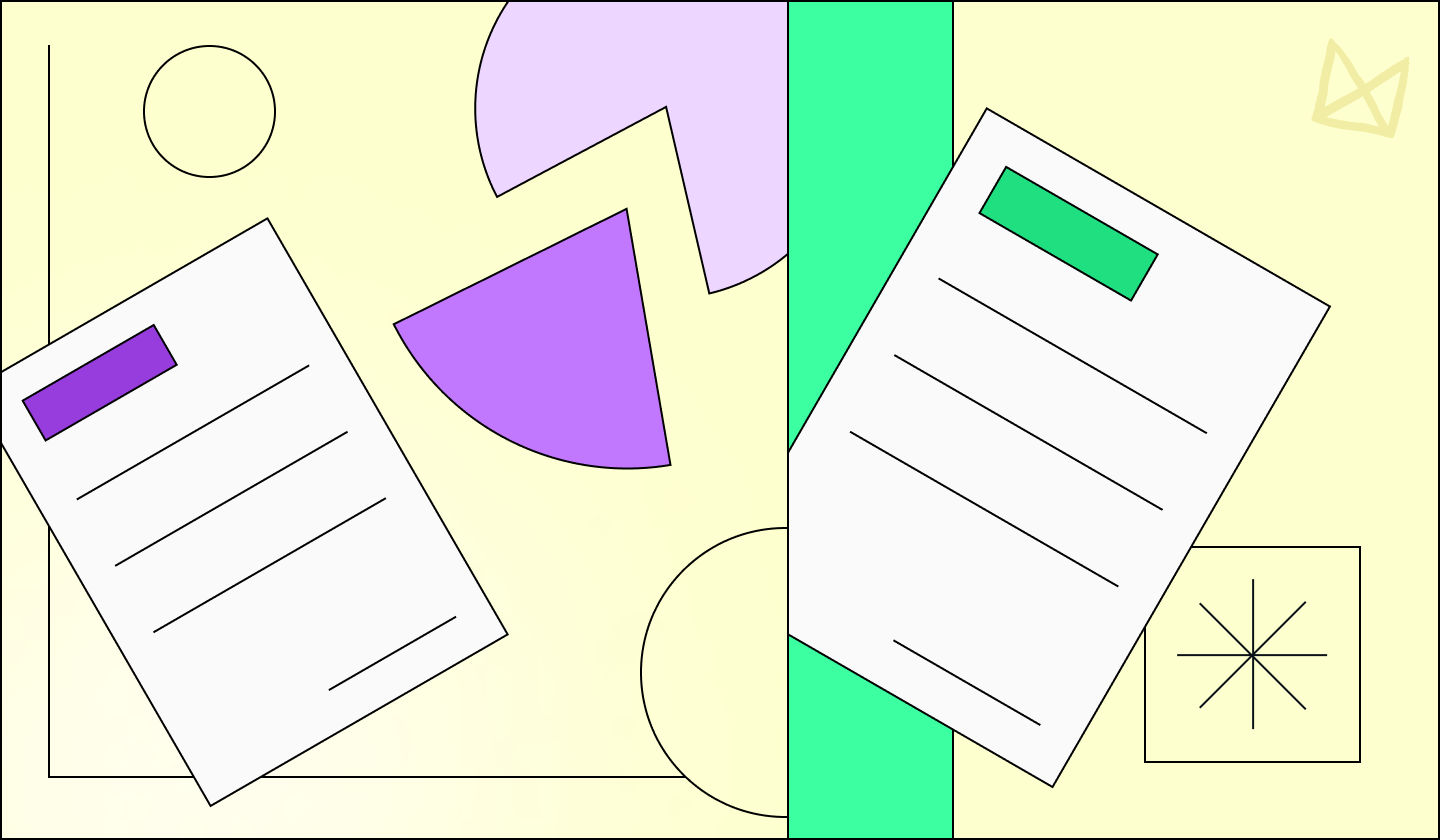
Have you ever wished for faster answers to your research questions? If your team has already conducted a few studies, you likely have a solid understanding of your users and may already have the answers you need.
However, various other departments within your organization are likely also receiving feedback from customers. How do you connect your data with insights from other teams? And how can you ensure that people have access to research data when they need it? Discover the solution in a research repository.
Based on our extensive experience working with diverse clients, including large enterprises and NGOs, UX Studio has developed a comprehensive ebook on research repositories for UX research. This resource covers all the essential aspects, starting with the definition and key principles of research repositories, along with insights on building and maintaining them for long-term success. We would also like to provide you with a sneak peek from the book about why a research repository is crucial for your organization.
What is a research repository?
Any system that keeps research data and notes that can be quickly retrieved, accessed, and used by the entire team is referred to as a research repository (or research library). Let’s look at the key components of this definition.
A research repository is a system that stores all of your research data, notes, and documentation (such as research plans, interview guides, scripts, personas, competitor analysis, etc.) connected to the study. It allows for easy search and access by the entire team.
Let’s take a closer look at the elements of this definition:
Storage system.
A system of this type is any tool you use to store and organize your research data. This can take various forms and structures. It could be an all-in-one application, a file-sharing system, a database, or a wiki.
Research data.
Any information that helps you understand your users can be considered research data. It makes no difference what format is used. Text, images, videos, or recordings can all be used to collect research data. Notes, transcripts, or snippets of customer feedback can also be used.
Ease of use.
Anyone on your team can access, search, explore, and combine research data if it is simple to use. Developers, designers, customer success representatives, and product managers are all examples of this. Any of them can gain access to the research repository in order to learn more about users. The researcher is no longer the gatekeeper when it comes to understanding users.
Since it’s a massive collection of research, the research repository is also the team’s go-to place for learning about users and their pain points. Instead of searching three different locations for reports, all research information is centralized in one single place.
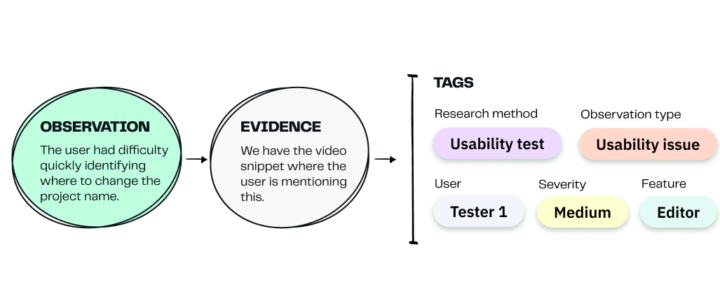
How can a research repository help your company?
As a company starts doing more and more user research, this means more studies, more reports, and a whole lot of information that you cannot really access unless you know who worked on what.
If you work in a company without a research repository, you probably rely a lot on file sharing software like SharePoint or Google Drive. This means you spend a lot of time navigating through folders and files to find what you’re looking for (if you can find it at all), as well as sharing file links to distribute your work and findings.
How often do you wish for a simpler way of organizing all this data?
Let’s explore how research repositories can elevate your research work!
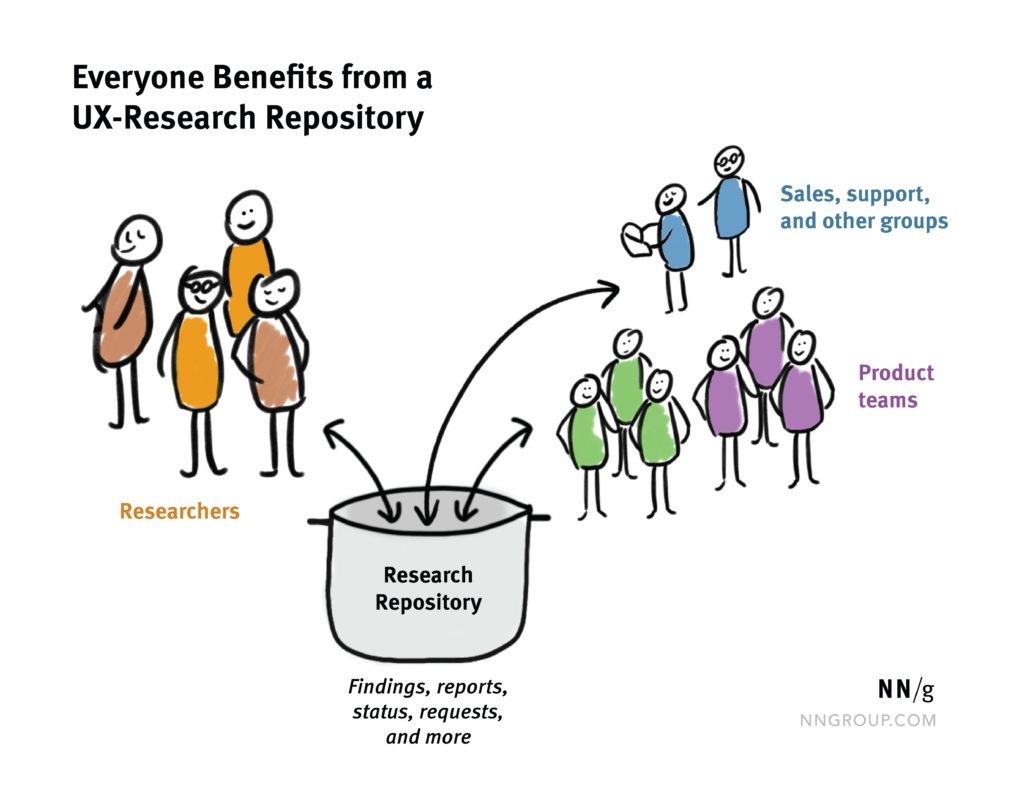
The go-to place to learn about users
Since it’s a massive collection of research, the research repository is the team’s go-to place for learning about users and their pain points. Instead of searching three different locations for reports, all research information is centralized in one single place.
Speeding up research.
Whenever you have a new research question, you can start by reviewing existing data. Since it’s all organized according to tags, you don’t have to go through multiple reports to find it. This way, if there’s relevant information, you get the answers faster.
Get more value from original research.
If research observations are no longer tied to report findings, they can be reused to answer other questions. Of course, if they’re relevant. This builds on the previous point of speeding up research. Also, it allows you to get more value from original studies.
No more repeated research.
As reports get buried and lost in file-sharing systems, so does the information they contain. We briefly mentioned this before. But you’re probably familiar with the situation. Someone performed a study on a feature at some point. Let’s say that another person joins the team and wants to learn about that feature. Without any knowledge of existing research, researchers start a new study for the same question. If, on the other hand, all the research data is centralized, you can see what questions have already been asked.
Enable evidence-based decisions.
Probably this is one of the biggest wins for a research repository. It allows teams to see the big issues that need to be solved. Also, teams get to see on their own, how these issues come up. On top of that, they can now use that data to prioritize projects and resources. This makes it easier than using gut feelings or personal opinions.
Anyone can learn about users – to increase UX research maturity.
By default, the researcher is the person who knows everything about users and their problems. A research repository opens up this knowledge to anyone who is interested. With a bit of time and patience, everybody can get to know users.
You can prioritize your roadmap.
Putting all the data together will give you an overall view of the user experience. This, in turn, will help you see what areas you need to prioritize on your roadmap.
Yes, it takes time and resources to set up and maintain a research repository. But the benefits are clearly worth that investment. Even more so since information, along with access to it are essential for high-performing teams. Besides research, it is about building trust and transparency across your team and giving them what they need to make the right decisions.
When to use a research repository?
Whether you are thinking about setting up a research system for an ongoing project or you would like to organize your existing insights, there are a few things to consider.
Long term, ongoing research.
This is common for in-house research. It may also occur if the user research is outsourced to a third party. Data will begin to pile up at some point in long-term, ongoing research. It will become more difficult to locate information as it accumulates. We’ve also discussed the issues that may arise if you only rely on reports. In this case, you will undoubtedly require a solution to organize and structure all of the research findings.
This is the first major scenario in which you should strongly consider establishing a research repository. Even if you’re a one-person team, and you’re the only one doing the research, it’s a good idea to start promoting research repositories. Explain your situation to your manager or team.
Multiple researchers are working on the same project.
It doesn’t really matter whether this is a short-term or long-term project. When multiple researchers are working on the same project, they require a solution that will assist them in compiling all of the data. You can collect all of the observations using a research repository. Even if the two researchers discuss their findings, using a research repository increases the likelihood that important data will not be overlooked.
Summary
Good products are developed from great insights. However, teams require access to these insights in order to integrate them into the product. This is where research repositories can be helpful.
Setting up a research repository may take some time, but it is a great investment for scaling research operations in the long run and increasing UX research maturity. Despite the initial effort required, a research repository can take your entire research to the next level. For this, you can use the tools you have at hand such as Notion or Google Sheet, or you can try out dedicated tools such as Dovetail or Condens.
At UX Studio, we have assisted numerous companies in setting up their research processes, enabling them to conduct in-house research and enhance their product development with a user-centered approach.
For comprehensive guidance on research repositories, we invite you to download our complete book here.
Do you want to build your in-house research team or create your own repository?
As a top UI/UX design agency, UX studio has successfully handled over 250 collaborations with clients worldwide.
Should you want to improve the design and performance of your digital product, message us to book a consultation with us. Our experts would be happy to assist with the UX strategy, product and user research, or UX/UI design.

